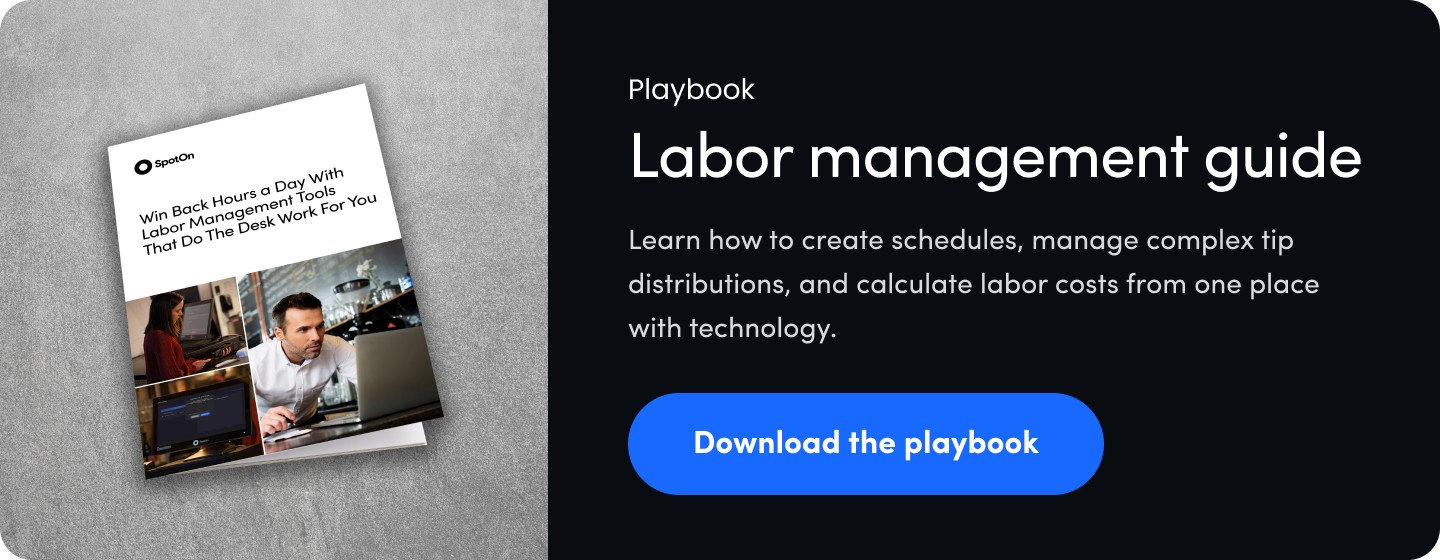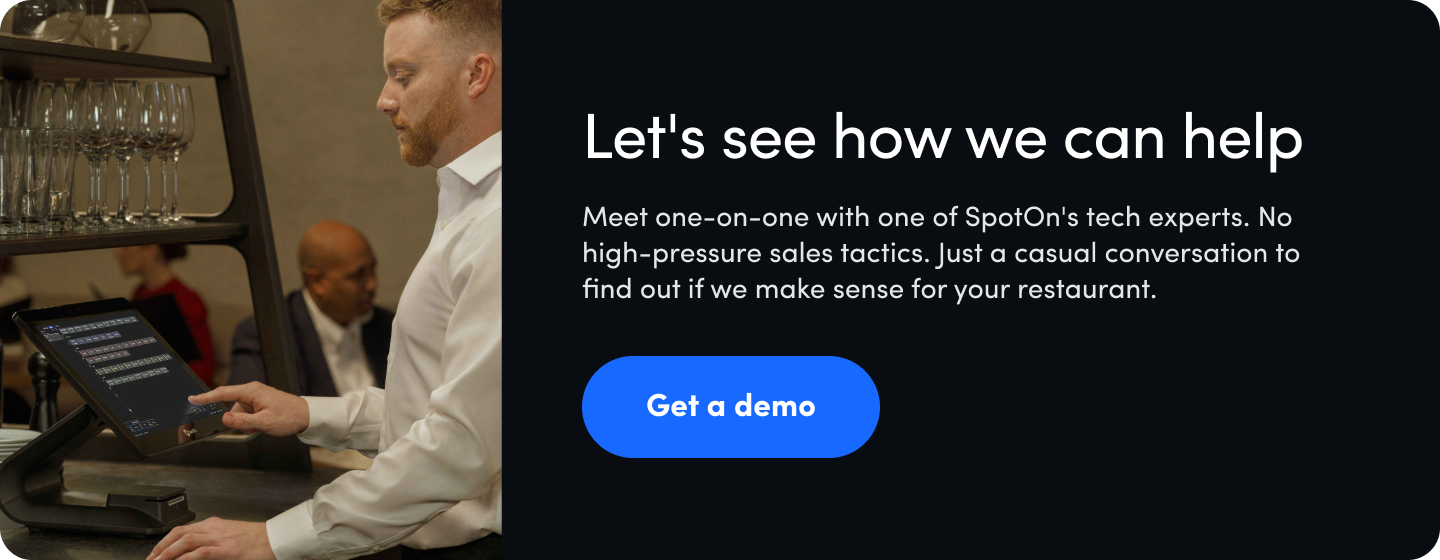Between the long nights, physically and emotionally demanding shifts, and constant curveballs, restaurant work can take a toll. For many in the restaurant industry, it’s part and parcel of getting to work in an exciting, rewarding environment in which every day imparts new knowledge and experiences. But without a counterbalance to the stress, restaurant work becomes less rewarding and more of a fast pass to burnout.

Cultivating a happy, healthy staff is a priority, no matter the industry. Research shows that 83% of American workers experience job-related stress. Stressed-out employees are less productive, more accident-prone, and more likely to quit. Turnover can be costly for restaurants. One study found the average cost to replace an employee is as high as $5,864. Some attrition is inevitable. But creating a positive work environment that anticipates and responds to employee stress can have a meaningful impact on your employees, their families, and your bottom line.
“Wellness” is everywhere. It’s the newest buzzword that many companies have used to create the misconception that self-care is all about buying candles and face masks. Wellness in the workplace, however, may look very different depending on the context. A bar or restaurant employee might have a different set of needs from an office worker or teacher, for example. Taking this into account will help you craft an employee well-being program that is tailored to your employees and their wants and needs.
There’s no one-size-fits-all. Your restaurant’s employee well-being strategy will depend on the size of your team, resources available, and buy-in from restaurant managers and employees. It’s a good idea to start small and gauge interest, then increase the events or benefit offerings over time. Here are a few ways to start fostering employee well-being at your restaurant.
1. Create an open channel of communication
One of the best ways to make people feel valued is free of charge: listen to your employees. Your team’s well-being is something that is constantly in flux. Regular pulse checks can help you determine which programs or initiatives would benefit your employees, the best way to implement them, and whether or not they’re working.
Lay the groundwork by creating an open channel of communication between ownership and managers, as well as managers and employees. This could look like regular team meetings regarding employee happiness, incorporating feedback into pre-shift or weekly team meetings, or anonymous surveys to better assess workplace satisfaction.

Poor communication is one of the top two reasons hourly employees quit a job. 39% cite “poor communication with my employer” as the main reason for resignation. You can show your employees you value communication by offering multiple ways to listen and engage. Open hours, labor management software, regular feedback sessions, and satisfaction surveys are all tools to show your employees you’re listening to them and value their perspective.
2. Celebrate the wins
All work, no play makes Jack a dull boy. While you want to create a professional atmosphere and remain focused on the guest experience, showing your employees that you appreciate them is integral to any happy workplace.
Celebrating the wins can involve a reward after reaching a high sales goal or time off after a particularly busy couple of weeks. It can involve your whole team, giving them a chance to celebrate and bond as a group or be a celebration of an individual team member reaching a work milestone or major accomplishment. A celebration doesn’t need to be a huge party recognizing a massive accomplishment. Small moments, like 3-month work anniversaries, promotions, and glowing guest feedback, are all worth celebrating.
Peak dining seasons, like the winter holidays or summer weekends, can be taxing for restaurant employees. Following these periods with recognition rewards your employees when they need it most. Think of things like closing your restaurant temporarily (during a slow period) to give your employees a chance to reset or offering small tokens of appreciation in the form of cards and gift cards.
Staff appreciation parties are a common way of thanking your hard working employees, but they don’t need to fit the traditional format. Consider what your staff would prefer. Maybe it’s an event that allows for families, involves a change of environment, or provides an alcohol-free alternative. Again, hearing your employees’ feedback and considering their preferences when it comes to celebration will make the wins even sweeter.
3. Spread the word about the benefits
Benefits in the restaurant industry have come a long way in recent years. Many employees are seeking out more than a comped meal and 20% discount, looking for employers who offer healthcare, retirement savings, and other benefits. While the scope of benefits you can offer is often limited by the size and profitability of your restaurant, one thing you can control is employee awareness of the benefits you’re currently offering.
Include all available benefits in the employee handbook that your staff receives during the onboarding process. When new offerings are available, share the news with your existing employees. If you’re unable to offer expansive healthcare benefits or savings tools, you can connect your employees to resources that can. Labor management software can help give your employees a clearer picture of what their take-home will be, helping inform near-term and long-term financial decisions.

Your benefits offering doesn’t have to be distilled down to a number on a paycheck. If you operate a small independent restaurant, you might consider collaborating with other local restaurants to offer collective benefits to all of your employees. A community discount for employees at local businesses is one example. Gym memberships, either partially or fully subsidized, can benefit your employees’ mental and physical health. Professional development opportunities, like wine classes or management workshops, can be huge benefits for your individual staff members and your team as a whole.
Creating a clear and consistent time-off policy is key for every restaurant operator. The flexibility of restaurant work is a huge advantage, but can also be a source of stress for many employees. Determine your policy for paid time off, sick days, and paid volunteer hours. Set guidelines for how employees can use paid time off, and consider including mental health days to ensure your staff is feeling good in body and mind.
4. Offer alcohol-free social events
The restaurant industry has the highest rate of alcoholism and the third-highest rate of drug abuse among all industries. Late nights, copious alcohol, and plenty of stress create a dangerous situation for many individuals. As a restaurant operator, it’s important to be aware of this statistic and consider what role you can play in keeping your staff and guests safe.
The boom of the zero-proof cocktail and booze-free social experience is a recent phenomenon. Many associate social events and parties with free-flowing drinks and similar revelry. But you may have employees who would opt out of this kind of social setting and prefer a different kind of social event. Think beyond the ABV-soaked party to group exercise classes, hikes, beach days, or crafting activities like painting and candle-making. Many of these events can also be family-friendly, giving your staff an opportunity to bring a family member or spend time with their children.
5. Prepare your managers
Restaurants are a people industry. Your managers are on the front line when it comes to supporting your employees and cultivating their well-being. Whether they’re overseeing 5 employees or 500, you want to make sure they’re prepared no matter the scenario. Employee well-being hopes to prevent incidents from happening and improve employee retention. But whether it’s a mental health crisis at work or a jam-packed shift while short-staffed, things happen.
Connect your managers to organizations like Restaurant After Hours, a non-profit that shares mental health resources specifically for the hospitality industry. Your managers are your number one messengers, so make sure they’re well-versed in staff benefits and team management. Finally, encourage them to seek support if they need it, too. Strong leadership doesn’t happen without a little help and guidance along the way.

So much of running a restaurant is focused on the guest experience. For good reason—they’re the ones paying the bills, leaving the tips, and ensuring the paychecks remain constant. But focusing on your staff experience is just as important. A fulfilled, supported staff experience can trickle down to impact your guests, sales, and profitability.
The past few years have sparked changes at a rapid clip in the restaurant industry. Concepts like “wellness” were unheard of a decade ago. While change can be difficult to adapt to, incorporating new programs and offerings, such as employee benefits, can lead to rewards in the long term. Fostering employee well-being can increase employee satisfaction. Plus, it might just change someone’s life for the better.














